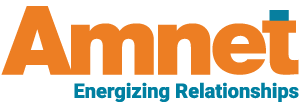Modern education is seeing a rising trend of digital-first classrooms. This shift signifies a changed impact of content format on student learning and interaction. PDFs have enjoyed dominance in the print era but fail to match today’s digital demands. EPUB is gaining popularity for its flexibility, accessibility, and compatibility with current technology. Here’s a look at how PDFs and EPUB fare for modern education.
Understanding the Basics: What Are PDF and EPUB?
- PDF (Portable Document Format): The document layout is the same across different mediums. This makes the document easy to print and share. However, it’s not highly interactive or versatile and isn’t easily compliant with accessibility. PDF accessibility services and PDF remediation tools are often needed to maintain compliance.
- EPUB (Electronic Publication): The layout is created to be digitally flexible. EPUB adjusts to fit any screen and is easy to interact with. It also aligns with WCAG 2.2 and EPUB Accessibility 1.1 standards. This makes accessible EPUB and fixed-layout EPUB solutions more popular among digital educators.
EPUB for Adaptive, Accessible Learning
Modern education demands content that is accessible, agile, and interactive. EPUB delivers all three. It supports features like:
- Text-to-speech compatibility
- Font resizing and high-contrast modes
- Interactive quizzes and multimedia
- Alt-text for images and semantic tagging
PDFs remain useful but have limitations. It renders itself to specific academic publishing needs, such as:
- Print-ready textbooks or handouts
- Official documents and forms
- Fixed-layout materials like graphs or engineering diagrams
Features like personalized learning, instructional design, and responsive content are absent in PDFs.
Meanwhile, EPUBs include video and audio clips that provide an interactive learning experience. A study involving 607 university students found that 74.6 percent preferred eBooks for their portability. Furthermore, 80.6 percent of students spent more than an hour reading from eBooks. The 2024 EDUCAUSE Horizon Report also highlights the growing role of digital tools in student engagement.
Costs and Environmental Considerations
Digital EPUB content provides long-term, cost-effective benefits. While initial development costs might be higher, EPUBs offer instant ease in updating and sharing content, leading to long-term savings. The environmental benefits of saving paper align with the sustainability goals followed by US educational institutions.
The Future of Educational Publishing in the United States
A report states that the global digital educational publishing market is set to increase by USD 26.19 billion between 2024 and 2028.
EPUB is valuable, as it supports new learning strategies, is accessible by mobile devices, and ensures access to people with special requirements.
The Verdict: EPUB Wins for Modern Learning
Compared to PDFs, EPUB offers greater flexibility, accessibility, and interactivity for modern education.
This is where Amnet adds value. With years of experience in EPUB 3 conversion, XML-first workflows, and Benetech-aligned practices, we help publishers produce content that meets today’s educational and accessibility standards. From tagging mathematical content and adding alt-text to validating outputs for certification, Amnet ensures every file is optimized for real-world learning environments. As more institutions shift toward digital-first publishing in 2025, choosing EPUB isn’t just about format; it’s about ensuring every learner can access content, regardless of their device, ability, or location. Get in touch with us today.
Source
https://pmc.ncbi.nlm.nih.gov/articles/PMC10248253/.
https://library.educause.edu/-/media/files/library/2024/5/2024hrteachinglearning.pdf.
https://www.prnewswire.com/news-releases/digital-educational-publishing-market-to-grow-by-usd-26-19-billion-2024-2028-as-innovative-marketing-by-publishers-expands-with-ai-impacting-market-trends–technavio-302275938.html?utm_source=chatgpt.com



